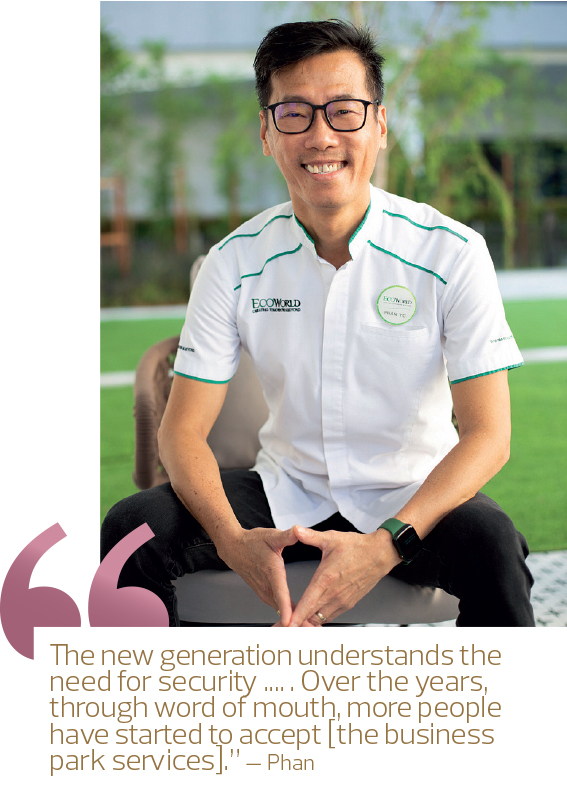Creating a green managed business park
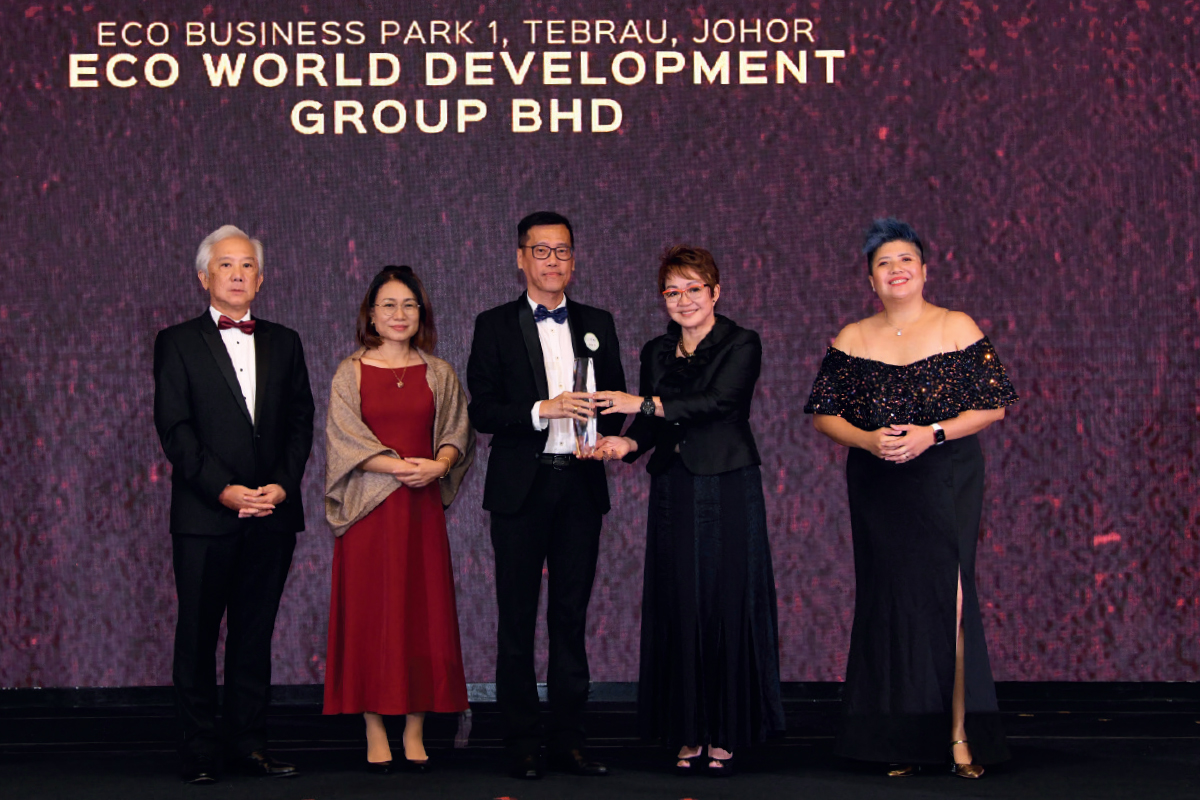
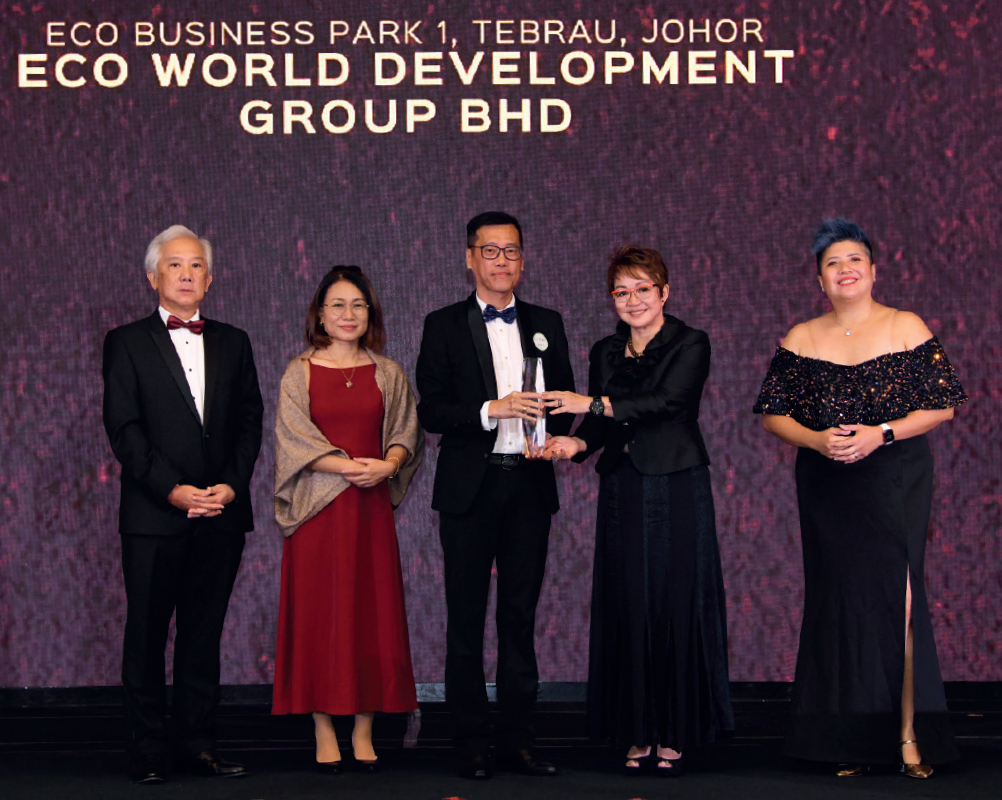
Winner | Eco Business Park 1 | Eco World Development Group Bhd
Ten years ago, before going “green” became a buzzword, Eco World Development Group Bhd’s (EcoWorld) management consciously decided it wanted to differentiate its 612-acre Eco Business Park 1 industrial development in Tebrau, Johor. The decision was made to create a managed business park with eco-friendly features that would enhance the working environment, ensure lower energy consumption, and also improve the mental and physical well-being of its workers.
This has largely been achieved although the business park continues to be a work in progress, with more than 200 acres of land still to be developed. In the process, though, it has helped uplift the surrounding areas with better infrastructure and connectivity.
Eco Business Park 1 is the recipient of The Edge Malaysia Property Excellence Awards’ Property Development Excellence (Industrial) award. Eco-World’s divisional general manager Phan Yan Chan shares how the group spotted a gap in the market.
“When we started 10 years ago, we saw an opportunity to have a managed business park in Johor Baru … traditionally, the area [that Eco Business Park 1 is in] is a manufacturing area and it was a bit messy and you see a lot of factories, each with its own security guards. Some [of the factories] are run-down, others are okay,” he explains.
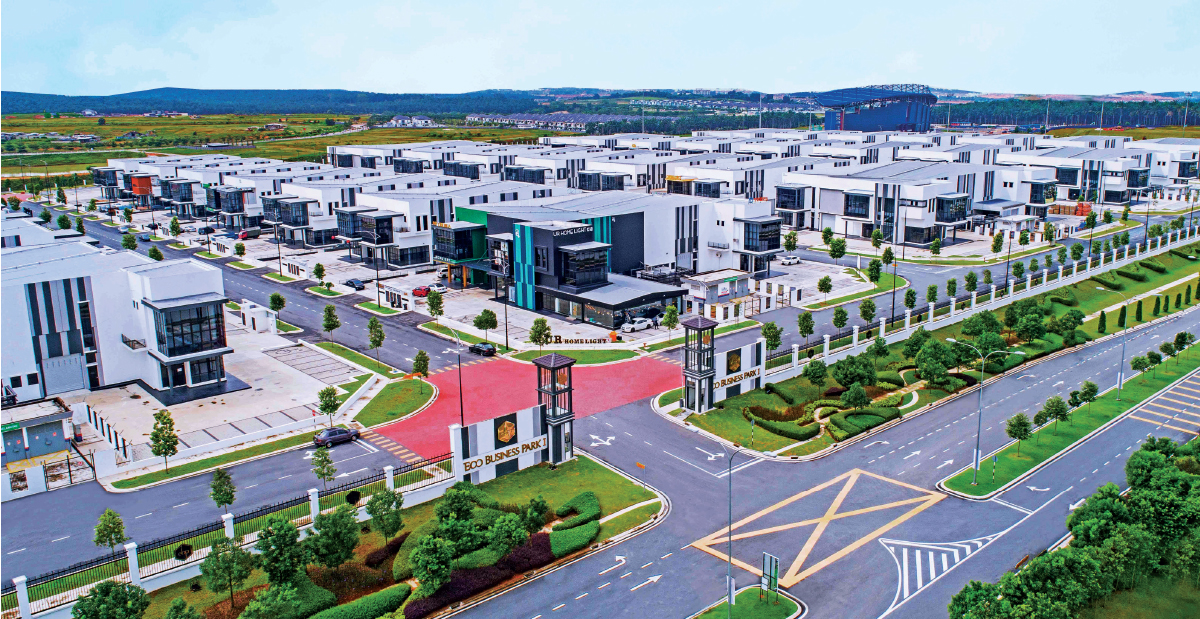
Today, going “green” is the norm, and Eco Business Park 1 is poised to reap the benefits of its positioning as more customers look for environmentally friendly factories. Of the entire 612 acres, 287.5 acres remain to be developed. Launched in May 2014, the business park is divided into three phases. Phases 1 and 2 have been fully sold and have an occupancy rate of 95% and 94% respectively.
Phan says that Phase 1 offered cluster, semidee and detached factories. Phase 2 also offered similar types of properties, but included more retail-type products that allowed for warehousing, retail and offices. The built-up of factories in Phases 1 and 2 was between 4,200 and 9,100 sq ft. For Phase 1 and Phase 2, factories were selling from RM2.27 million and RM2.2 million respectively.
Phase 3, which will soon be under development, will see a new launch of semidee factories measuring 100ft by 180ft with a built-up of 9,000 sq ft and selling prices of between RM2 million and RM3 million. Phan says the launch will be in the first half of 2023.
The gross development value (GDV) of the entire business park is RM2.59 billion with total sales of RM1.15 billion so far. The land tenure is freehold and the maintenance fee is RM200 to RM579 a month.
Phan explains that there is a one-stop centre to assist owners and tenants on all matters relating to setting up shop. He says that many are from Singapore and the one-stop centre helps them with all the requisite approvals from local authorities and also in applying for incentives from the Malaysian Investment Development Authority (MIDA) if necessary.
According to Phan, the north-south orientation of the business park not only helps reduce the heat gain of the factories, but also energy consumption to cool the factories. Moreover, the east and west sides of the factories allow more light and ventilation into the properties.
All factories come with a rainwater harvesting system. Owners or tenants of the factories can install solar panels if they so require. Phan says installation is not a major issue as it is quite a simple job. He adds that there is a solar panel manufacturer on-site, giving tenants and owners the added convenience of purchasing directly from the vendor without the need to venture out of the business park. Furthermore, there is a 600-bed workers’ dormitory operated by an external party, reducing the carbon footprint of and travel time for staff. Auxiliary police patrol the business park and every phase has a dedicated entrance.
Additionally, the business park offers green spaces. “After we did all our [factory] layouts, we also set aside space for active and passive parks. The landscaping will make the park look neat and we planted some trees in a dedicated green area,” Phan shares.
He explains that the percentage of the land allocated for green spaces is between 10% and 13% of the 612 acres. When asked if setting aside this land means fewer opportunities to make more money, Phan says that it was the management’s decision to ensure eco-friendly facilities and designs were incorporated in this business park. That decision is paying off handsomely as more companies are looking to improve, to cater to or to include ESG (environmental, social, and governance) initiatives, be it for their own organisation or along the supply chain.
Over the years, this conscious decision to be eco-friendly in the design of the business park has led to it attracting customers and tenants looking for a managed business park and also a place where manufacturers adhere to ESG regulations. However, the early days were tough as many, being still of the old school, were unfamiliar with the concept of a managed business park and unable to understand the need to pay maintenance fees. Thankfully, the new generation of business owners saw the benefits of having such a business park.
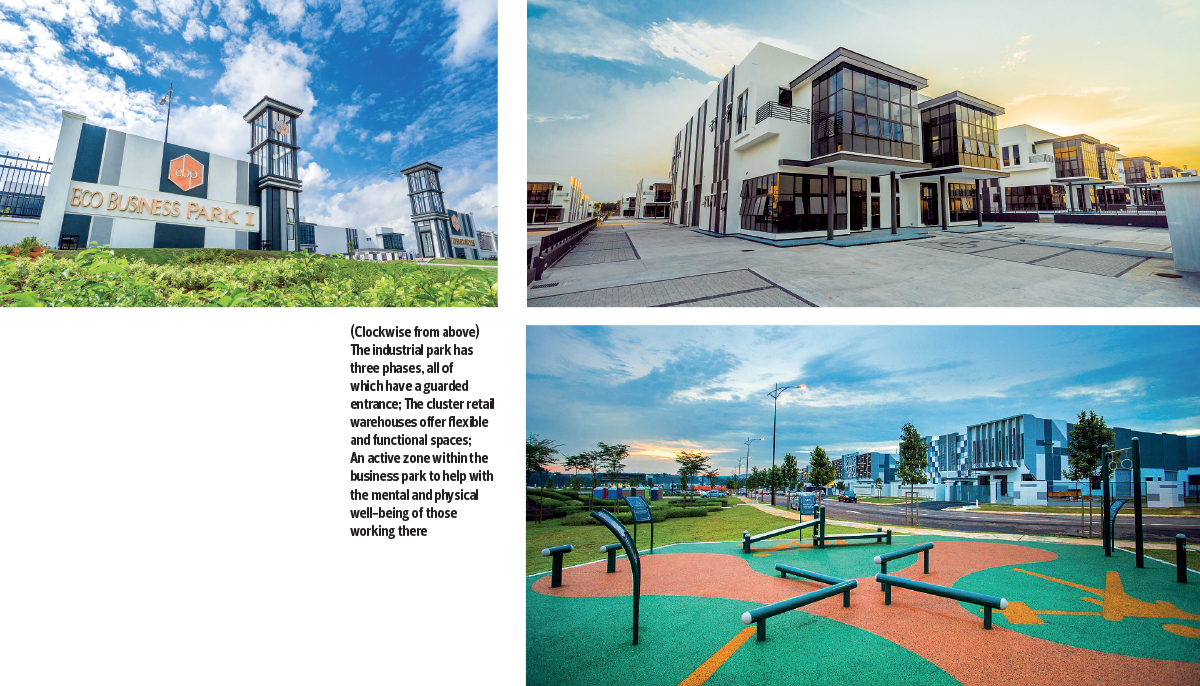
“The new generation understands the need for security and by paying the security fee, they don’t have to worry. Over the years, through word of mouth, more people have started to accept [the business park services],” Phan says.
He adds that the efforts put into educating the people on Eco Business Park 1 have benefited the other two business parks [Eco Business Park 2 in Senai and Eco Business Park 3 in Pasir Gudang] in the state as they were taken up faster than Eco Business Park 1.”
As the business park took shape, so did the surrounding areas, Phan notes. The road leading to the business park was widened, and newer roads connecting residential areas with the park have also been built. In fact, Eco Spring, a residential project by EcoWorld, is not far from the business park. Phan says this allows employees working at the business park easy access to homes and, at the same time, the park has workers nearby.
The majority of businesses in Eco Business Park 1 are from the engineering, electrical, chemical, automotive and equipment sectors (24%). Other businesses include interior design/furniture and fittings (10%), investment (11%), health and beauty, fashion apparel (6%), food and beverage (11%), construction/building materials (12%), office/consultancy/agency (17%), logistics, shipping and warehousing (8%), and pets and veterinary (1%).
Suffice to say, standing out from the crowd and implementing something that isn’t the norm in an area that was not well managed did not come easy. Clearly, for EcoWorld the decision to move forward with an eco-friendly business park has borne fruit, with the area now transformed into a more active and vibrant location.

The content is a snapshot from Publisher. Refer to the original content for accurate info. Contact us for any changes.
Related Stocks
| ECOWLD | 1.410 |
Comments
